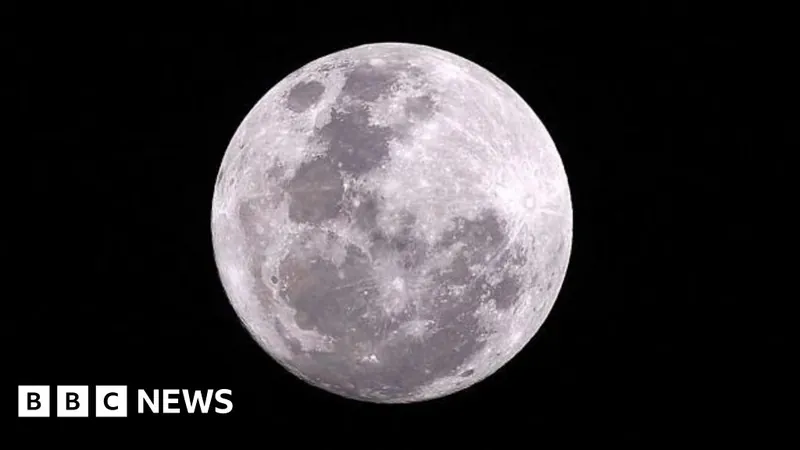
Slight Increase in Asteroid Risk to Moon: What You Need to Know!
2025-04-04
Author: Liam
Slight Increase in Asteroid Risk to Moon
A recently discovered large asteroid, known as 2024 YR4, has seen a slight uptick in its likelihood of colliding with the Moon, according to NASA. Initially assessed to have an extremely minimal chance of impacting Earth in 2032, NASA has revised that risk to just 0.004%. However, the agency now indicates that the chances of a Moon impact on December 22, 2032, have surged from 1.7% to 3.8%. This recalibration was made using advanced data gathered from telescopes, notably the groundbreaking James Webb Space Telescope.
Despite this increased likelihood, there remains a robust 96.2% probability that the asteroid will miss the Moon. Additionally, NASA has clarified that even if the asteroid does collide with the lunar surface, it would not affect the Moon’s orbit or pose any threat to Earth.
Innovative infrared observations from Webb have also allowed scientists to refine the estimated size of 2024 YR4 to between 53 and 67 meters—a comparable scale to a 10-story building. Since the asteroid was first identified in December at a telescope in Chile, numerous other celestial objects have made closer approaches to Earth than the Moon without incident.
While smaller asteroids may have entered Earth’s atmosphere unnoticed, the Moon's history is heavily marked by craters resulting from past impacts. Although a collision with 2024 YR4 remains unlikely, it would present a rare opportunity for scientists to directly observe a celestial collision, providing invaluable insights into the Moon's geological response to such events.
Professor Mark Burchell, a noted expert in space science at the University of Kent, commented to New Scientist magazine, 'A Moon strike would be an extraordinary experiment, a golden opportunity for observation.' He noted that telescopes, and even binoculars, might be able to detect the event.
As preparations continue, NASA's Webb Telescope plans to conduct additional observations of 2024 YR4 next month. Stay tuned as we follow this celestial story that could offer an extraordinary glimpse into our universe!









 Brasil (PT)
Brasil (PT)
 Canada (EN)
Canada (EN)
 Chile (ES)
Chile (ES)
 Česko (CS)
Česko (CS)
 대한민국 (KO)
대한민국 (KO)
 España (ES)
España (ES)
 France (FR)
France (FR)
 Hong Kong (EN)
Hong Kong (EN)
 Italia (IT)
Italia (IT)
 日本 (JA)
日本 (JA)
 Magyarország (HU)
Magyarország (HU)
 Norge (NO)
Norge (NO)
 Polska (PL)
Polska (PL)
 Schweiz (DE)
Schweiz (DE)
 Singapore (EN)
Singapore (EN)
 Sverige (SV)
Sverige (SV)
 Suomi (FI)
Suomi (FI)
 Türkiye (TR)
Türkiye (TR)
 الإمارات العربية المتحدة (AR)
الإمارات العربية المتحدة (AR)